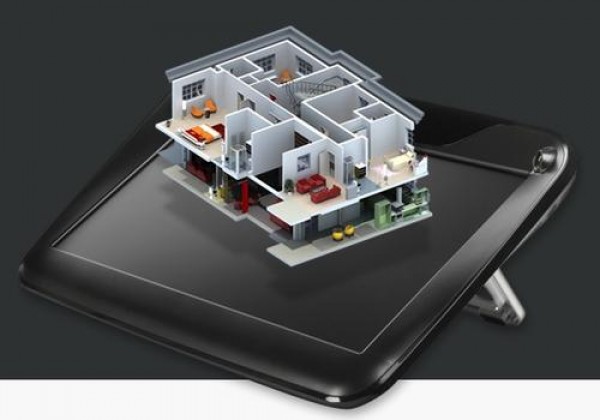Objects in zSpace appear “solid” in open space, allowing users to manipulate them directly as if they were real physical objects.
Talk about an unusual and cutting-edge way to interact with CAD and other design tools. Infinite Z, which bills itself as a startup although it’s been around in development mode since 2007, has launched its first product: an immersive, interactive 3D environment that uses virtual-holographic 3D imagery to bring product designs to life.
The zSpace platform, which comprises a proprietary stereoscopic display, trackable eyewear, and a new type of direct interaction stylus, works in concert with the company’s software to display objects that appear “solid” in open spaces, allowing the engineer or designer to directly manipulate them as if they were handling real, physical objects. According to Infinite Z, the zSpace virtual-holographic objects, which appear with full color and at a high resolution, look remarkably similar to real physical objects. In combination with the direct interaction stylus, users can navigate, grab, slice, carve, zoom, and perform other common functions to explore 3D models in a natural manner that hasn’t been possible using traditional input devices.
It’s a bit hard to visualize without seeing the demo. zSpace isn’t a tablet or a 3D display – in fact, company officials say it’s in a category by itself, as it redefines standard display and mouse interaction. Scott Harris, a long-time CAD consultant who’s working with Infinite Z, says zSpace’s unique method of interaction will make working with CAD, medical imaging, GIS, and media and entertainment applications far more intuitive. “It can made a lot of the things you do all the time much more efficient,” he explains, “and it takes down some of the barriers people have when working with CAD systems.” For example, he says, six-degrees-of-freedom operations are much more streamlined with the zSpace approach compared with traditional input tools.
Because zSpace employs virtual holographs, the object (in this case, a part or assembly) will look as if it’s floating in front of you. Using the pencil-like stylus, which has some sort of laser beam in front, users can click on the object and rotate it around, and the object will appear to the user as if it’s sitting directly in front of her on her desk, for example. The interaction paradigm really lends itself to design or concept review, Infinite Z officials assert, because you can put items up and place them in a scene just as if you’re putting a phone on a table and without requiring the users to think about adding constraints.
Part of Infinite Z’s mission here is to forge partnerships with providers of design tool software to encourage them to support the zSpace platform. To that end, the first iteration of zSpace, slated to ship in the first half of 2012 at a pricetag of around $6,000, will support Autodesk’s Maya 3D animation software and its Showcase 3D rendering and presentation tool. The firm is working with other CAD, CAE, GIS, and animation software providers to expand support for the tool.”
Article Written By: Beth Stackpole, Contributing Editor, Design Hardware & Software
Read the original article HERE.


